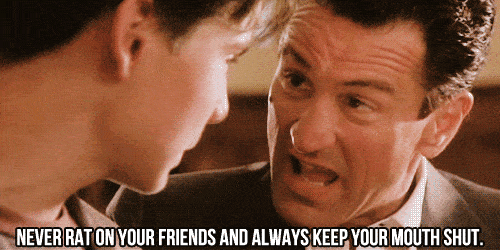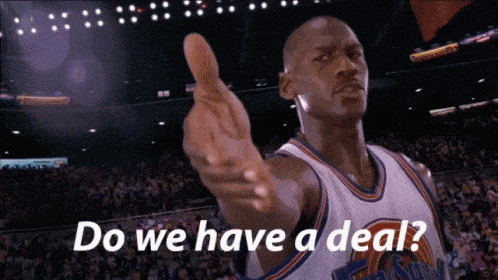
I’m going to try and give a bit of my bootstrapping philosophy in the next couple minutes because the last 24 hours my feed has been packed with VC advice and the “path to profitability.” It made me think about the opportunities that are missed because of choosing to create hyper-growth rather than effective scale. Natural Growth is something that most businesses can wait for, word-of-mouth is slow.
The bridge between word-of-mouth and hyper-growth can be achieved at a good pace that is profitable and gives a strong customer base to build from while providing a customer experience that you’re proud of.
As someone who has a sales and marketing background, its hard to not talk about return on investment (ROI) unless you’re getting caught up in the art of your brand, building awareness or entering a new market and have to hire, onboard and train new staff.
Otherwise, I have a hard time convincing clients to spend without a concrete result. Sure, I can justify reach, engagement, time-on-site and other metrics to say that a campaign is working, but it really comes down to marketing creating leads and sales turning leads into new business.
The other metric that I find forgotten in start-ups and smaller companies is retention. There are many articles with data from thousands of paying subscribers that show how much more it costs to acquire a new customer compared to retaining your existing user base. Before you say, but Chris, that’s churn. NO. Churn happens earlier. This is extending your customer lifetime value.
Let’s break it down: From nothing to loyalty.
So you’ve got a product or service that’s ready for the market….

Nothing ➡️ Impressions
To most leaders who don’t have the sales & marketing chops, the work here is 99% done. In the world of sales and marketing, you’ve got 99% of the way to go. While we can debate about who’s right — the bottom line is that we’re both right through our lens.
The dev focused founder has crafted something that feels like its ready for the market. Yet, the big idea might be focused around scratching their own itch or small sample size.
Getting impressions takes the research into who will buy your product and understanding each of these potential customers in depth.
Listen, loud and clear, this step saves you money.
The stronger depth of knowledge about your addressable market and more specifically, your potential best customers, your brief will be tight — giving the creative team a strong direction and saving time AND you’ll waste less in advertising dollars reaching unqualified people.
Overall, you want to create impressions to the right audience. The ones who can convert. Start with a plan on how to roll out the process systematically. This could be geographically, demographically or based on a limited number of people.
We’re here as marketing to support you and make sure we deliver a good customer experience, not create headaches. Save the Superbowl ad money for later, let’s scale and get your brand in front of the right folks before considering the largest single-event television audience.

Impressions ➡️ Engagement
Those impressions, no matter how many you can reach with your budget, there needs to be a distinct call-to-action (CTA) and a method to act. While we love our typical CTA phrases, it must meet your criteria. Appeal to your audience and have a logical action that your audience can act on.
Back to the last section, the research matters. We’ve seen incredible ideas for campaigns that have very low responses because a dangerous assumption was made. It usually falls with the “act” part of the call to action… here are some thoughts:
- When planning on putting a QR code on your print advertisement, think about how your prospects will scan it… don’t make them download a new app on their phone just so they can “learn more” about your product.
- If you’re planning on building a VR application, understand that you’ll need an audience sophisticated enough to download your player (since at the moment few VR applications are supported native in the browser — or the client doesn’t want to invest in it)
- Clicking through should go to a dedicated page that mirrors the campaign so prospects know they are in the right place. Seriously, don’t send them to your home page… unless you’re redesigning your homepage to match the campaign.
Getting engagement can be the same as expressing interest, depending on the medium used, but we have many metrics that can measure digital campaigns that don’t get you further down the funnel. Having someone like, comment or watch your video to the end doesn’t mean they are ready to buy. They’re engaged, how will you encourage them to take the next step.

Engagement ➡️ Expressed Interest
This can sometimes be redundant and merged with the engagement section above, however, I’ve separated it because for many businesses who have a higher value product or service to sell, you often need to warm up your leads, educate them on the features and benefits before they will express interest in buying.
High-value leads are where most of our content marketing clients are operating. Each email they get matters. Every single client makes an impact on the bottom line. They’re not selling a chocolate bar or pack of gum beside the cashier at Walmart.
Moving forward from engagement to expressed interest can often be through education. In some cases, new products might need to carve out the necessity of the entire industry, like the iPod used music more than hardware to sell its product.
Other times, education might be a benefit over a competitor. In this example, I’m blown away in competitive software niches like cloud accounting and online proposals, they not only list their competitors, but they compare and contrast on their own website.
Personally, I’m not a fan of your competitors being on your own website. I’d rather focus on what matters… them becoming a qualified lead.

Expressed Interest ➡️ Qualified Lead
Don’t underestimate the qualified lead. It’s not a slam dunk, but you’re pretty close. In fact, qualified leads in the B2B space typically convert, but its a matter of timing and resources (we’ll get to that in on-boarding).
If you have a strong pitch that shows value, overcomes all objections and has a feasible adoption period, you’re in a good place.
Because of the qualified leads taking time before they close, it’s important to keep them warm with intermittent or frequent communication so you’re top of mind. A follow-up sequence that’s independent of your sales team is probably a good idea. Integrate this with your CRM so your salespeople see the content that has been sent and the response of the prospect, but isn’t required to handle the entire sequence on their own.
When you’re ready, grab a cup of coffee, because “coffee is for closers” …

Qualified Lead ➡️ Sale
A qualified lead has confidence in your sales team already and will be moving forward formally, but has already made the purchase mentally. This isn’t to discount the effort involved in this step, you’ve got to officially get clients signed up, or you’re not going to be around for long.
Having this process feel less intimidating and familiar will work in your favor. If there are specific terms and conditions that might give a prospect cold feet that you haven’t already covered, it needs to be woven into the content above (somewhere).
Final objections can happen. So can haggling on price. Be ready, practice overcoming objections, focus on value and the benefit that your product is going to create.
After all, you’re still making a sale, you’re not an order taker.

Sale ➡️ On-Boarding
Now we can talk about churn. Yes, churn. As I touched on above, churn happens here — during the on-boarding phase. It might not happen during your 7-day free trial or the day after the first invoice hits and they are surprised with the real cost.
The bottom line here is, you’re new, and you’ve invited the right people to the party. You’re trying to build friendships, and the reality is you might not be making much progress in the next 3, 6, 9 months. Summer could come quickly and… ok, enough about making new friends at a new school, that storyline does have some parallels here, but back to business:
Losing someone before they are fully on-boarded is a shame, its churn, and it’ll kill you. Above talked a lot about adding value. If someone is leaving at this point, they probably haven’t experienced the value you’ve promised.
There’s a straight forward way to fix it: Be Sticky. Make it a party everyone wants to attend.
First, think back to freshmen orientation in your first semester of college (for those of you who didn’t go to college in the US, watch Van Wilder, it’s Ryan Reynolds bringing a new student into his college experience, and hilarious). The goal was to make you feel comfortable in a new setting. One that takes you out of your comfort zone initially, but over the next four years you’ll come to love it. The familiarity of space (campus tour) and introduction to extracurricular activities create a sense of community. Welcome.
Honestly, how long did it take for you to settle in? Keep that in mind when thinking about the length of your on-boarding process. If your customer life cycle is longer than college, you should have an on-boarding process that’s longer than your college orientation.
Next, make your on-boarding process something that is memorable and applies some level of gamification. Each task that’s required should be a milestone. For some companies, I’ve heard of them having a full team that migrates information so the client doesn’t have to lift a finger (just provide a password).
This process creates stickiness. We love winning together. If the onboarding process has 5 steps, that’s 5 wins you can celebrate with your new client.
Your process should be thorough, yet manageable. Systematic, yet personalized. Make each of your clients feel welcome and an advocate for your product.

On-Boarding ➡️ Loyalty
Follow-up and Follow Through. It’s as simple as that.
How?
We often make the assumption that our clients will never betray us, even we might have won them over from a competitor. Business is business — if there’s a better deal for your clients out there, it’s in their best interest to take it… unless you’ve got an intangible value, like loyalty.
Simply put, you’ll need to keep investing in your clients to keep them happy. That could be as simple as listening and acting on their feedback to improve your product. Or as difficult and going above and beyond with your service calls.
Some clients take more effort to keep happy. Others fell self-sufficient. Neither of those traits is a tell-tale of who might stay and who might leave. It’s up to you to build a strong relationship. One that will give you full transparency, even when a new opportunity might be competing with yours. Know that if that were to happen, you’ll probably hear about it too and have the opportunity to match, beat or double down on your services.
I’ve heard of sales nightmares where clients were leaving because the product was being used incorrectly or didn’t know that a feature was included. As simple as it was to take 90 seconds to show them, it wasn’t even on their radar.
Make the calls. Check-in. Hustle to keep your clients loyal and you’ll reach the promised land of a strong user base that is growing naturally.

Loyalty ➡️ Retention and Referrals
Integration of your company’s product and the clients that you have lead to discussions about process, which you are a big part of. I still hear to this day PC vs. MAC conversations at boardroom tables when the mix of tablets and laptops come out. Each person defending their choice of device is a recommendation.
The boardroom example might not be as strong, but your most loyal customers will be shouting your praises too… if you give them the opportunity.
Nothing ➡️ Loyalty
It is possible to achieve this mixed state of scale, profitability, and retention. It’s systematic and certainly not reserved for large companies. Look at your standard operating procedures and decide on your path.
I’m confident if you’re operating your business that you’re beyond Nothing and if you’re getting ready to start using your enthusiasm. I wish you well, no matter the place, to achieve Loyalty in your business.
Customer experience is so valuable to me that we’ve built our agency to help build and boost your customer lifetime value. Never would I have thought I’d be making the most impact for clients by focusing on CX and LTV… but, I also love great experiences, knowledgable concierges and excellent service. Contact Us to Get Started.
This post was written by Chris Milton, a marketing nerd with sales intuition. He focuses on creating customer experiences in digital and physical spaces that get people to buy what you’re selling. The original article was published here.
- The Logical Rise of Affiliate Programs – It’s a Referral! - December 29
- How Companies Pivoted In 2020 - December 22
- Helping You Achieve Your Business Goals - December 18